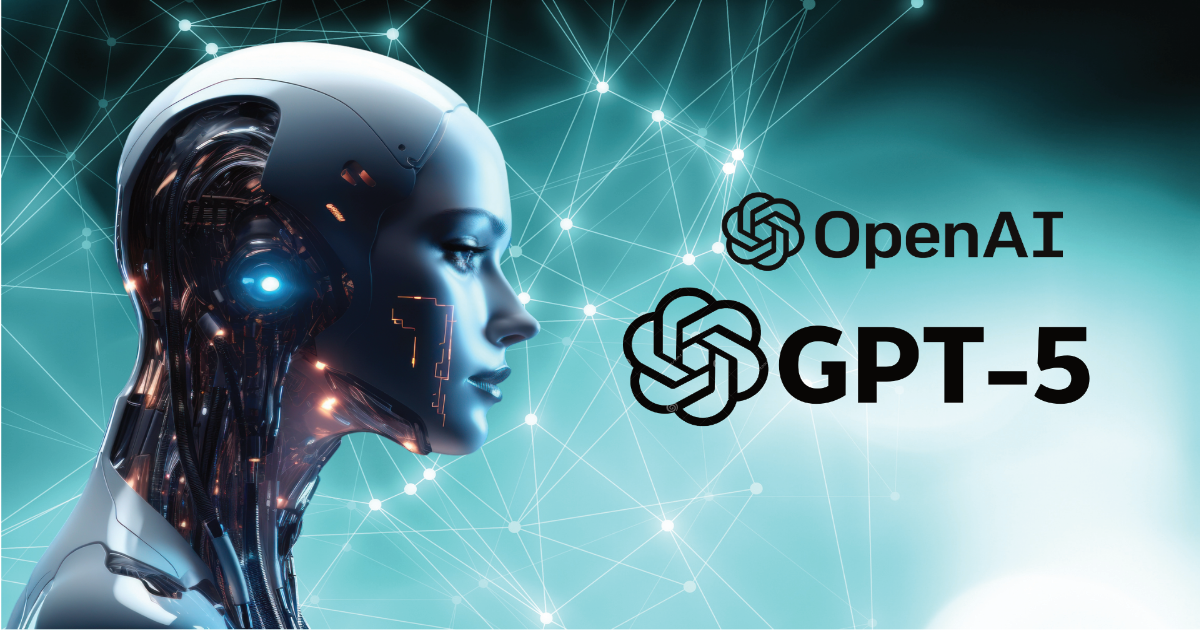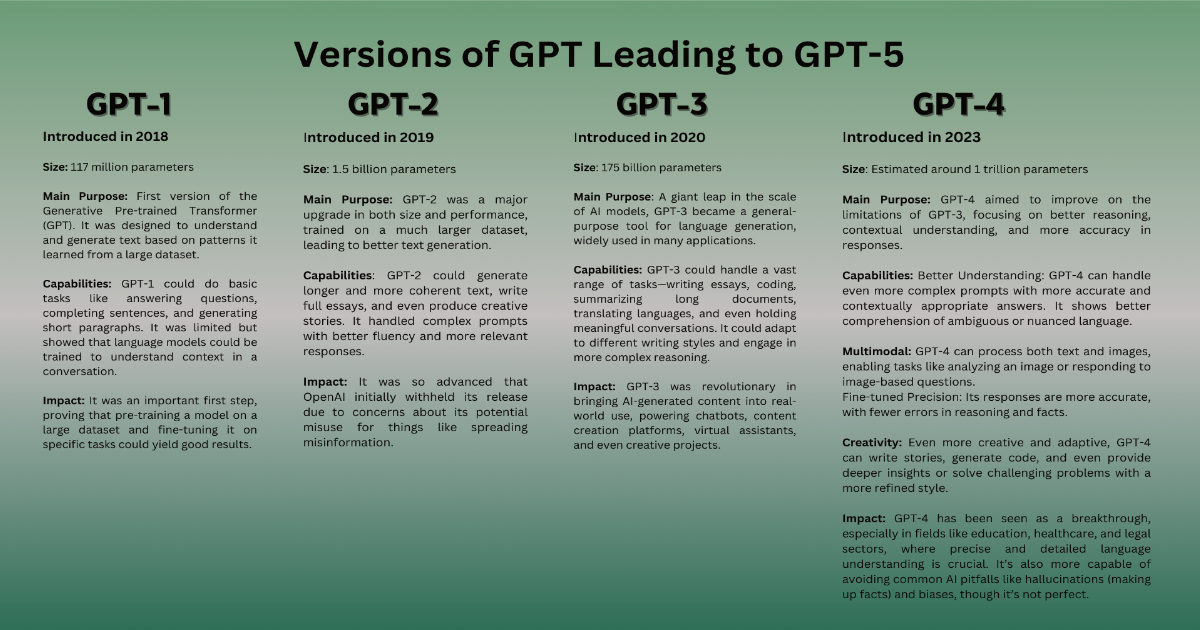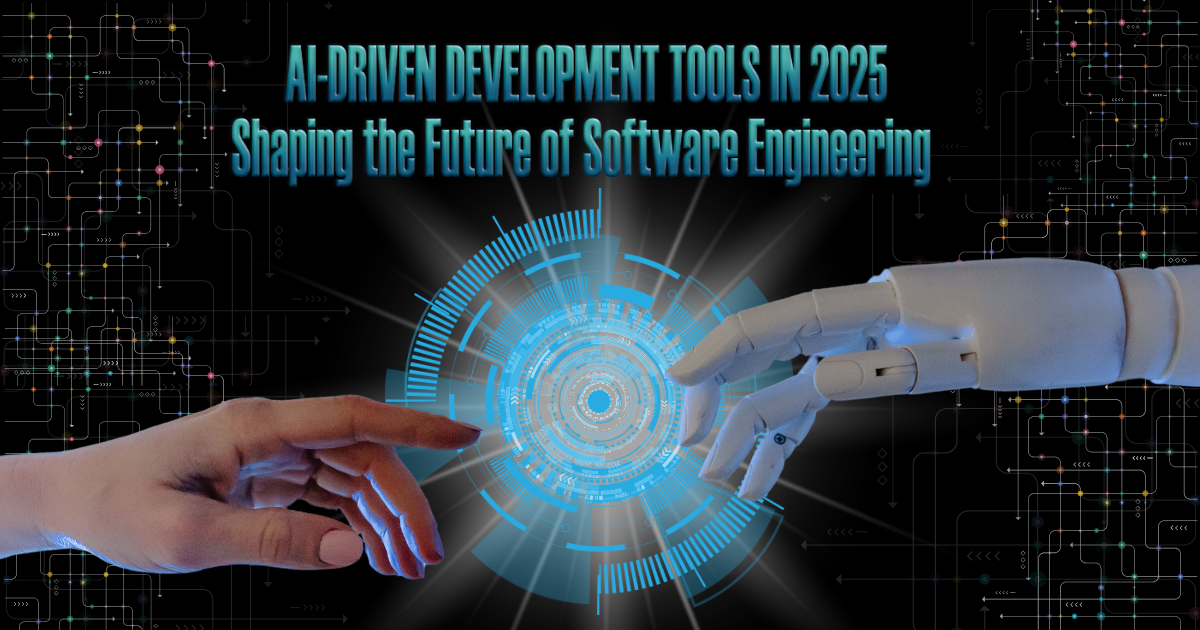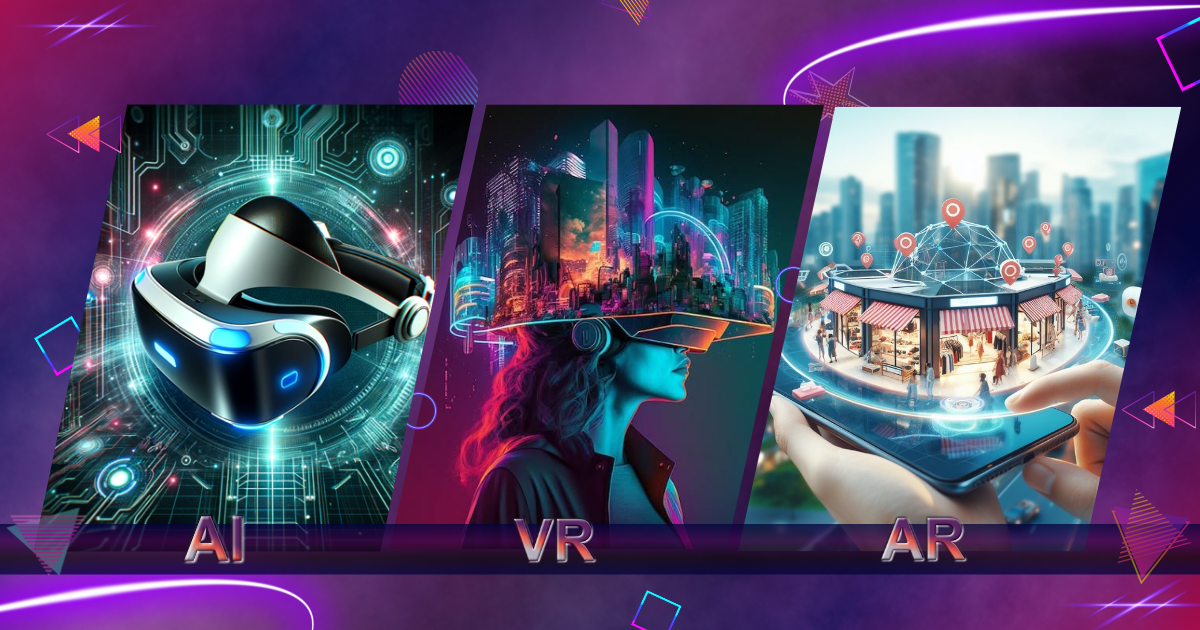
Artificial Intelligence (AI) has rapidly evolved over the past few decades, with each new generation of models surpassing its predecessor in complexity, capabilities, and applications. From simple rule-based systems to highly sophisticated neural networks, AI has transformed industries, reshaped business strategies, and altered the way we live. However, the ultimate frontier in AI development has been the quest to create Artificial General Intelligence (AGI) — an AI that can perform any intellectual task that a human being can do. With the release of GPT-5 by OpenAI, many experts in the field believe that the long-sought AGI might have finally arrived.
This article delves into the specifics of GPT-5 as the first recognized AGI, its architecture, capabilities, implications for various industries, ethical concerns, and how businesses, particularly from a digital marketing and SEO perspective, can prepare for a world powered by AGI.
I. The Evolution of AI Leading to GPT-5
To fully appreciate the significance of GPT-5, it is important to understand the journey of AI development, especially the groundbreaking progress made by the Generative Pre-trained Transformer (GPT) series. OpenAI, a research organization that has been at the forefront of AI advancements, developed the GPT series to push the boundaries of natural language understanding and generation. Each version has introduced more sophisticated techniques, larger datasets, and enhanced computational capabilities.

GPT-1 to GPT-4: Building the Foundations
The first model in the GPT series, GPT-1, was introduced in 2018 and demonstrated the potential of unsupervised learning in NLP (Natural Language Processing). Its architecture was based on transformers, a relatively new type of neural network that was more effective in handling sequential data. GPT-1 paved the way for GPT-2, which was released in 2019 and gained attention for its ability to generate coherent and contextually accurate text. GPT-3, which launched in 2020, took the world by storm with its unprecedented size, boasting 175 billion parameters. It could engage in detailed conversations, create creative writing, code in various programming languages, and even provide rudimentary reasoning capabilities.
GPT-4, released in 2023, continued the trend of improvement by integrating multimodal learning (handling both text and images). This marked a significant leap in AI’s ability to understand and generate across multiple data types, but it still fell short of true AGI, as it couldn’t perform complex reasoning at a human level or operate with the full flexibility of human cognition.
The Leap to GPT-5: A Quantum Step Toward AGI
GPT-5, the latest iteration in this evolutionary chain, represents the point where AI might have transcended from narrow AI to general AI. It is designed to not only process language and images but also perform complex, human-like reasoning, learning, and problem-solving across various domains without the need for task-specific tuning. GPT-5 incorporates advanced neural network architectures that simulate human-like cognitive processes, leading many experts to believe it has achieved AGI status.
Unlike its predecessors, which were focused on language generation, GPT-5 is capable of performing a wide range of cognitive tasks, including abstract reasoning, decision-making, and creative thinking. It understands context beyond mere text input and can generalize knowledge across domains, which makes it capable of independent learning and adaptation.
II. GPT-5: Architecture and Innovations
The architecture of GPT-5 builds on the successes of its predecessors, incorporating several key innovations that distinguish it as a potential AGI. These innovations include:
a. Hierarchical Neural Networks
One of the primary advancements in GPT-5 is its hierarchical neural network structure. Traditional neural networks operate in layers, with each layer extracting progressively complex features from the input data. GPT-5 introduces hierarchical structures within layers, allowing for deeper understanding and contextualization of data. This enables the model to capture relationships between concepts that are more abstract and nuanced than those understood by previous models.
b. Multimodal Learning at a Deeper Level
While GPT-4 introduced multimodal learning, GPT-5 takes this concept to a deeper level. It can integrate and analyze not just text and images but also audio, video, and even real-time sensor data, such as IoT inputs. This allows it to perform tasks like recognizing emotions in speech, predicting market trends based on news reports and social media, and even diagnosing medical conditions from a combination of symptoms, scans, and patient history.
c. Dynamic Adaptation and Continuous Learning
One of the limitations of previous AI models was their static nature; once trained, their knowledge was fixed. GPT-5 incorporates a dynamic adaptation mechanism that allows it to continue learning from new data in real time. This enables it to remain current, adapt to new information, and refine its understanding of the world as it evolves. This continuous learning capability is a hallmark of AGI, as it mimics the way humans constantly update their knowledge base.
d. Meta-Learning and Self-Reflection
A breakthrough innovation in GPT-5 is its ability to engage in meta-learning and self-reflection. It can analyze its own performance, identify areas of improvement, and adjust its approach accordingly. For example, if GPT-5 generates a response that it deems suboptimal, it can reflect on why the response was flawed and refine its future outputs. This self-regulatory ability allows GPT-5 to achieve a higher level of cognitive functioning, similar to how humans assess and improve their thinking processes.
e. Integration of Knowledge Graphs and Semantic Networks
GPT-5 incorporates sophisticated knowledge graphs and semantic networks that provide it with a vast database of structured and unstructured information. This enables it to understand not only the words and phrases it processes but also the underlying meaning and relationships between concepts. As a result, GPT-5 can engage in more meaningful conversations, generate insightful content, and provide more accurate and contextually relevant information.
III. Capabilities of GPT-5
GPT-5’s capabilities are a testament to its status as the first AGI. These capabilities extend far beyond those of its predecessors and represent a significant advancement in the field of AI.
- Natural Language Understanding and Generation
GPT-5 excels in natural language processing, capable of understanding and generating human-like text with unprecedented accuracy and coherence. It can engage in complex conversations, understand nuanced context, and generate content that is indistinguishable from that created by humans.
- Visual and Auditory Perception
With its multimodal training, GPT-5 can process and interpret visual and auditory data. It can analyze images and videos, recognize objects and scenes, and even generate visual content. Additionally, GPT-5’s auditory capabilities allow it to understand and generate speech, making it a versatile tool in applications such as virtual assistants and content creation.
- Cross-Domain Generalization
One of the most significant advancements in GPT-5 is its ability to generalize knowledge across domains. It can apply concepts learned in one context to solve problems in another, demonstrating a level of flexibility and creativity that is characteristic of human intelligence. This ability to generalize is a key feature that distinguishes AGI from narrow AI.
- Real-Time Adaptation and Learning
GPT-5 can learn and adapt in real-time, continuously improving its performance as it interacts with new data. This self-improvement capability allows GPT-5 to handle novel situations and challenges, making it a truly dynamic and intelligent system.
- Ethical and Moral Reasoning
OpenAI recognized the importance of ethical considerations in the development of AGI. As a result, GPT-5 was designed with advanced ethical reasoning capabilities. It can evaluate the ethical implications of its actions and decisions, ensuring that its behavior aligns with human values and societal norms. This ethical framework is crucial in ensuring that AGI operates safely and beneficially in the real world.

IV. Implications of GPT-5 for Various Industries
The advent of GPT-5 as the first AGI has profound implications for a wide range of industries, from healthcare and finance to education and digital marketing. Here’s how GPT-5 is poised to transform key sectors:
1. Healthcare
In healthcare, GPT-5’s ability to process and analyze large volumes of data in real time allows for breakthroughs in diagnostics, personalized medicine, and drug discovery. Its integration of multimodal inputs means it can analyze medical records, genetic data, imaging scans, and real-time patient feedback to provide highly accurate diagnoses and treatment recommendations. Additionally, GPT-5’s continuous learning capability ensures that it remains updated with the latest medical research and can adapt to emerging health threats, such as pandemics.
2. Finance
In the finance industry, GPT-5 is revolutionizing everything from algorithmic trading to fraud detection. Its ability to process vast amounts of data, including market reports, financial statements, social media sentiment, and macroeconomic indicators, allows it to predict market trends with unprecedented accuracy. Additionally, GPT-5 can provide personalized financial advice, optimize investment portfolios, and detect fraudulent activities by analyzing complex transaction patterns.
3. Education
GPT-5 is set to transform the education sector by providing personalized learning experiences for students of all ages. Its ability to analyze individual learning styles, preferences, and knowledge gaps enables it to create customized learning plans that cater to each student’s unique needs. Moreover, GPT-5’s continuous learning capability ensures that it remains up to date with the latest educational research and teaching methodologies, allowing it to deliver the most effective educational content.
4. Digital Marketing and SEO
For digital marketers and SEO specialists, GPT-5 presents both opportunities and challenges. On the one hand, its ability to generate high-quality, contextually relevant content means that businesses can leverage it to create engaging and SEO-friendly content at scale. GPT-5’s ability to analyze user behavior, search trends, and social media sentiment allows it to optimize content for search engines and provide insights into emerging trends.
However, the rise of GPT-5 also means that the SEO landscape is likely to become more competitive. As more businesses adopt GPT-5 for content creation and optimization, the challenge for SEO specialists will be to differentiate their content and strategies. GPT-5’s continuous learning capability means that it will constantly evolve, so SEO professionals will need to stay updated with the latest developments and best practices to maintain their competitive edge.
V. Ethical Considerations and Challenges
The development of GPT-5 as the first AGI raises several ethical concerns and challenges that must be addressed. As GPT-5 becomes increasingly integrated into various industries, the potential for misuse, bias, and unintended consequences also grows.
a. Bias in Decision-Making
One of the key ethical concerns surrounding GPT-5 is the potential for bias in decision-making. While GPT-5 is capable of processing vast amounts of data, the quality and diversity of that data can influence its outputs. If the training data contains biases, GPT-5 may inadvertently perpetuate or even amplify those biases in its decision-making processes. This is particularly concerning in industries such as healthcare and finance, where biased decisions can have significant real-world consequences.
b. Loss of Human Jobs
As GPT-5 takes over tasks that were traditionally performed by humans, there is a growing concern about the potential for job displacement. While GPT-5’s ability to automate tasks can lead to increased efficiency and productivity, it also raises questions about the future of work. Industries that rely heavily on manual or repetitive tasks, such as data entry, customer service, and content creation, may see significant job losses as GPT-5 becomes more prevalent.
c. Privacy and Data Security
Another major ethical concern is the issue of privacy and data security. GPT-5’s ability to process and analyze vast amounts of data in real time means that it has access to sensitive personal information, such as medical records, financial transactions, and social media activity. Ensuring that GPT-5 adheres to strict data privacy regulations and safeguards user information will be critical to preventing misuse or data breaches.
d. The “Black Box” Problem
Despite its advanced capabilities, GPT-5, like other neural networks, remains a “black box” to some extent. This means that while it can generate highly accurate outputs, the underlying processes and reasoning behind those outputs are not always transparent or explainable. This lack of transparency raises concerns about accountability and trust, especially in high-stakes industries such as healthcare and finance.
VI. Preparing for a GPT-5-Powered World
As the first AGI, GPT-5 has the potential to reshape industries, economies, and societies in profound ways. Businesses, particularly in the digital marketing and SEO space, must be prepared to adapt to a world where GPT-5 plays a central role.
a. Leveraging GPT-5 for SEO
SEO specialists can leverage GPT-5’s advanced capabilities to improve their content creation and optimization efforts. GPT-5 can analyze search trends, user behavior, and social media sentiment to generate SEO-friendly content that resonates with target audiences. Additionally, GPT-5’s ability to continuously learn and adapt means that SEO specialists can stay ahead of emerging trends and algorithm updates.
b. Staying Competitive
As more businesses adopt GPT-5 for their content creation and optimization efforts, the SEO landscape is likely to become more competitive. SEO specialists will need to differentiate their strategies and content to stand out in an increasingly crowded market. This may involve focusing on niche markets, creating highly personalized content, or leveraging GPT-5’s multimodal capabilities to create engaging and interactive content.
c. Ethical SEO Practices
As GPT-5 becomes more prevalent in the digital marketing space, SEO specialists must ensure that their practices align with ethical standards. This includes avoiding the use of GPT-5 to generate spammy or misleading content, as well as ensuring that content is inclusive and free from bias. Additionally, SEO specialists should be mindful of data privacy regulations and ensure that any data used to optimize content is handled securely and ethically.



